Abstract
After subcutaneous inoculation of approximately 10(6) cocci, changes in staphylococcal populations were followed by the enumeration of organisms in excised tissues. In contrast to conventionaal Staphylococcus aureus strains, exfoliatin-producing strains were able to multiply in the subcutaneous tissues of neonatal and adult mice. Although strains capable of producing large quantities of exfoliatin were better able to proliferate than strains producing lesser amounts of toxin, it was not determined whether exfoliatin was directly responsible for the observed multiplication. Two variants exhibiting a partial loss in exfoliatin production showed minor changes in proliferative capability. A third strain, after being cured of its exfoliatin plasmid, manifested a marked reduction in exfoliatin production and was unable to multiply subcutaneously. With some strains multiplication proceeded for several hours but was then followed by a decline in the number of viable organisms. Histological sections of subcutaneous lesions revealed a rapid influx of neutrophils, but leukocytes accumulated in the region regardless of whether the organisms multiplied or were eliminated.
Full text
PDF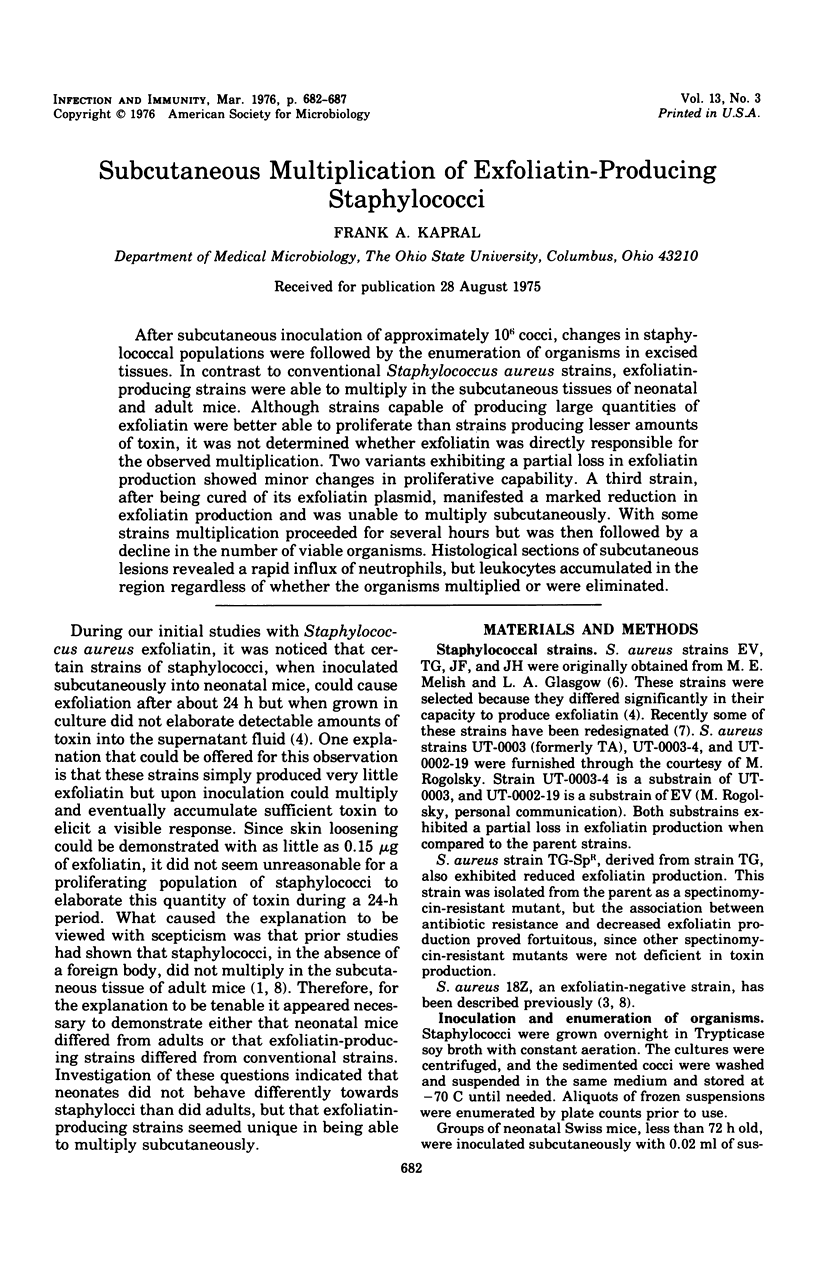
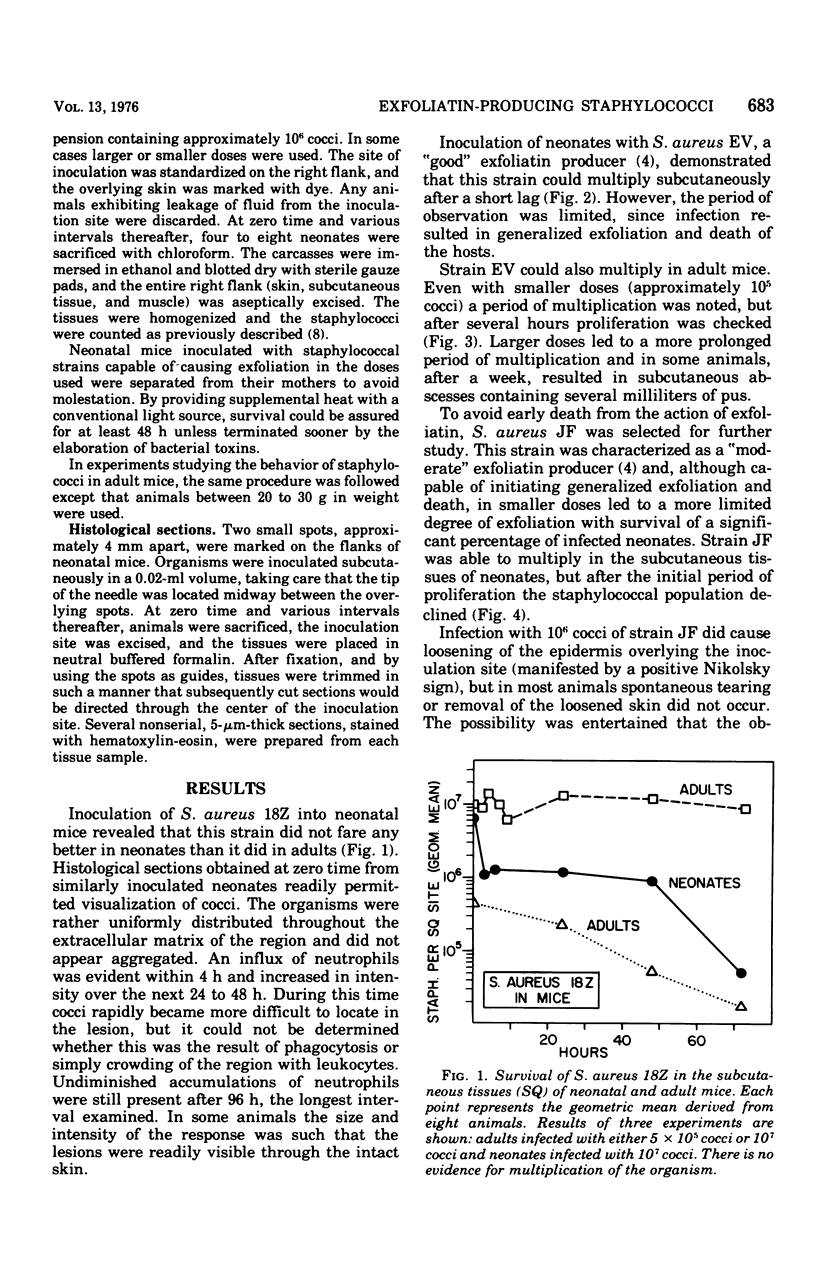
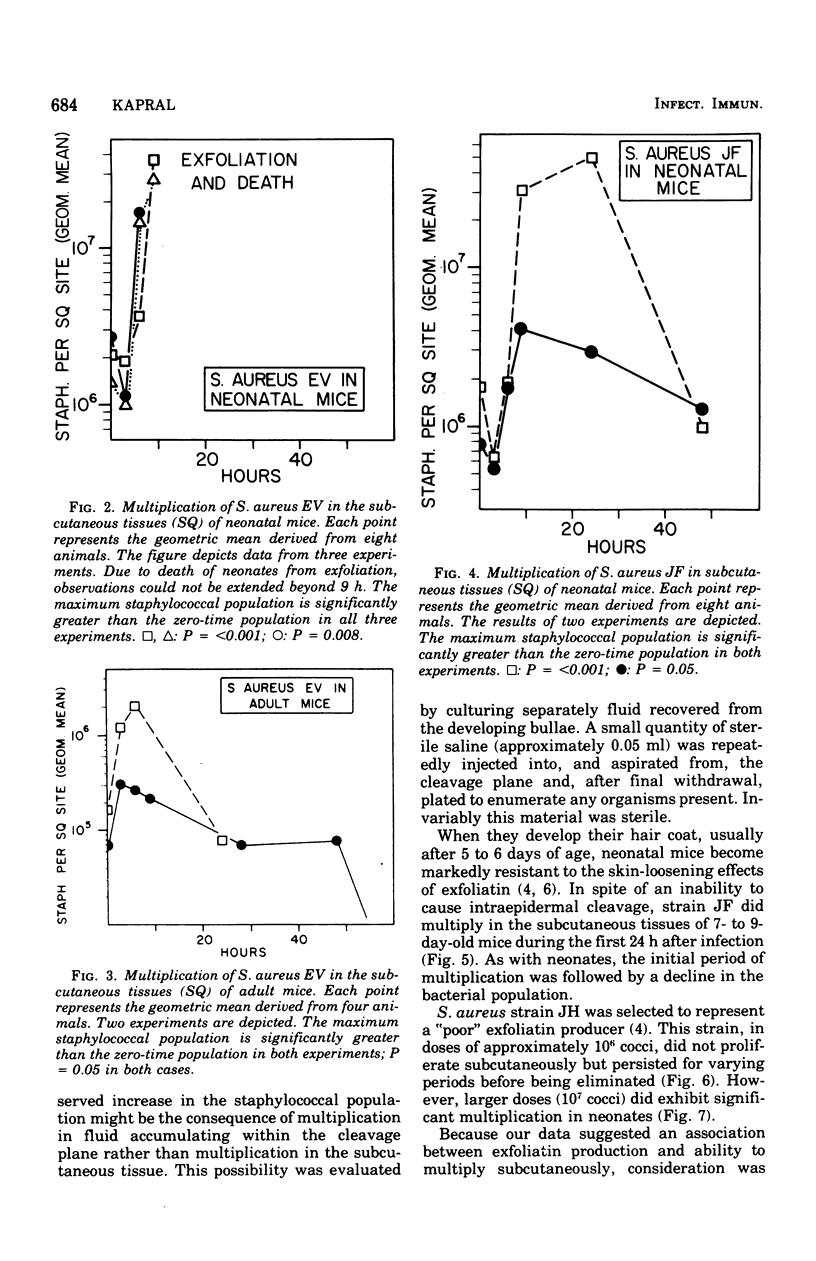
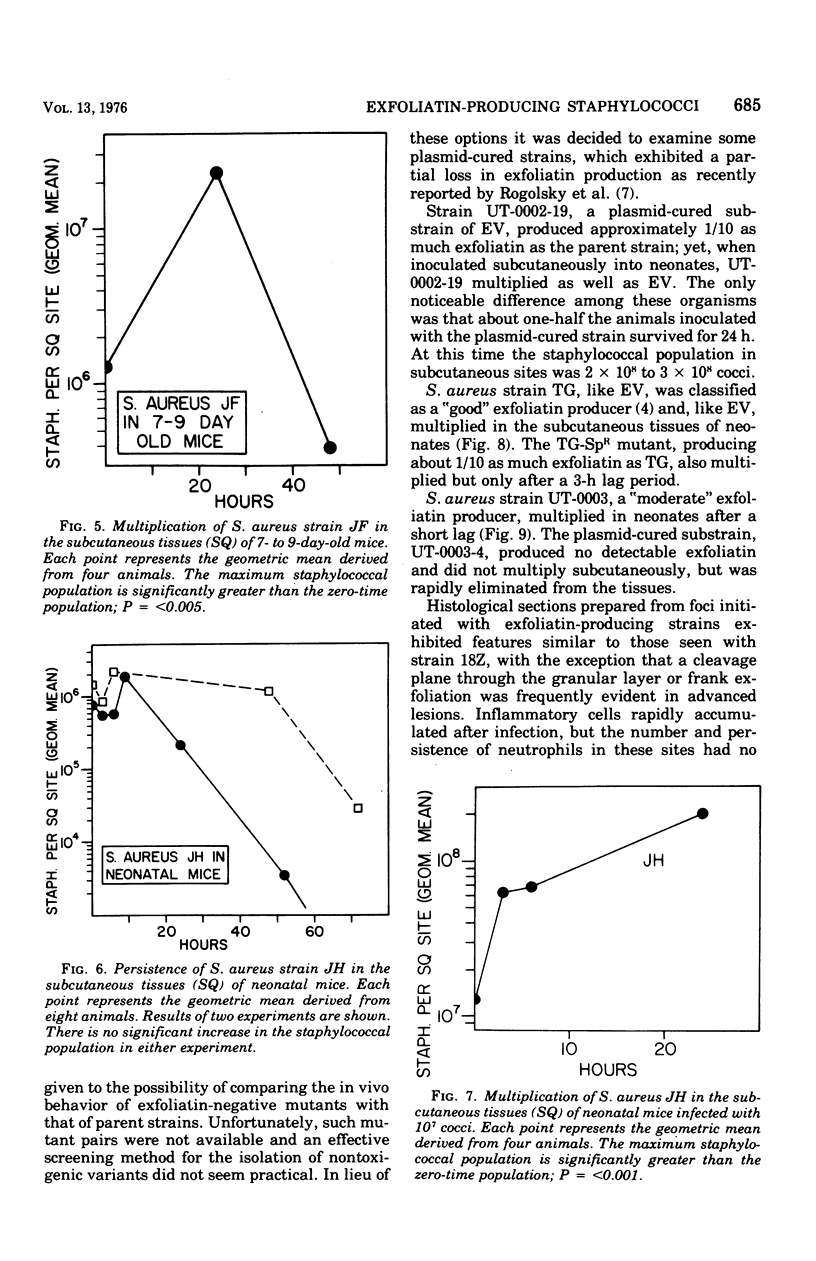
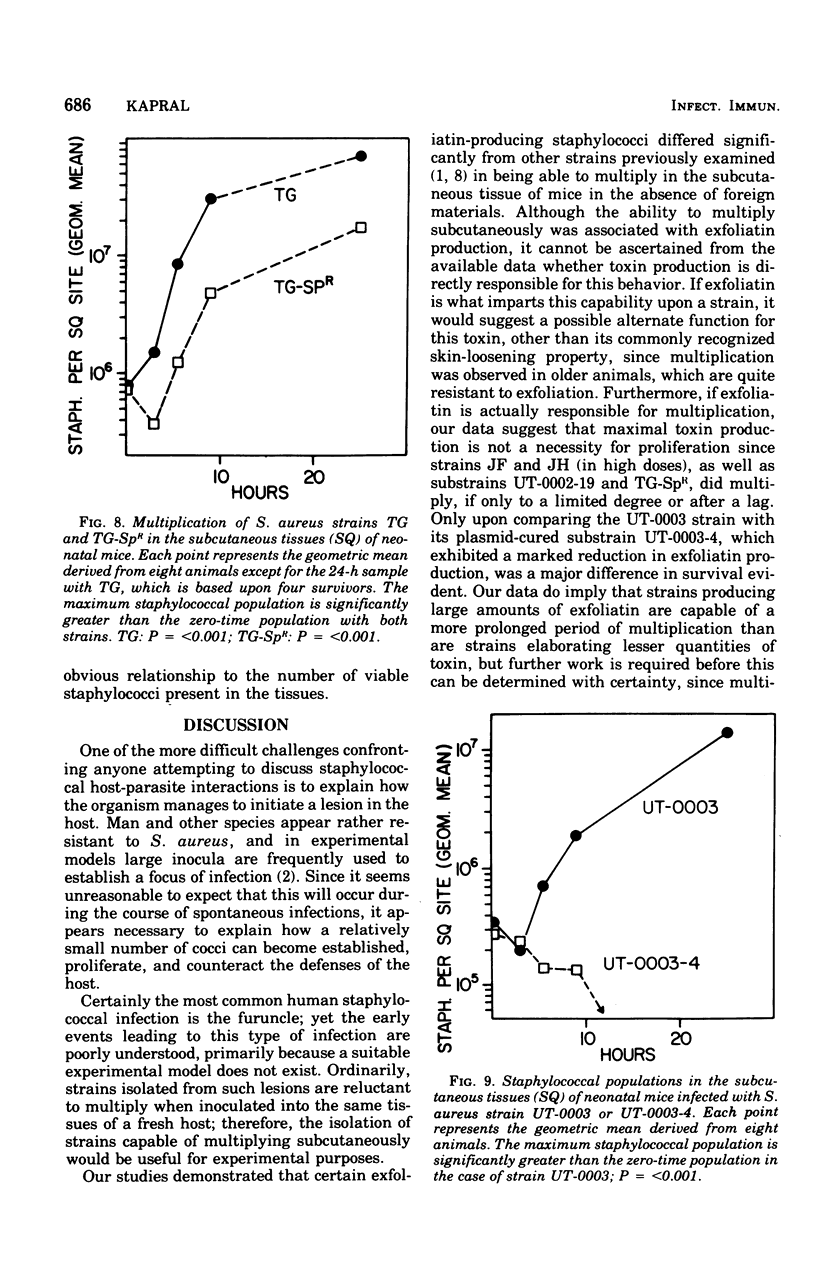
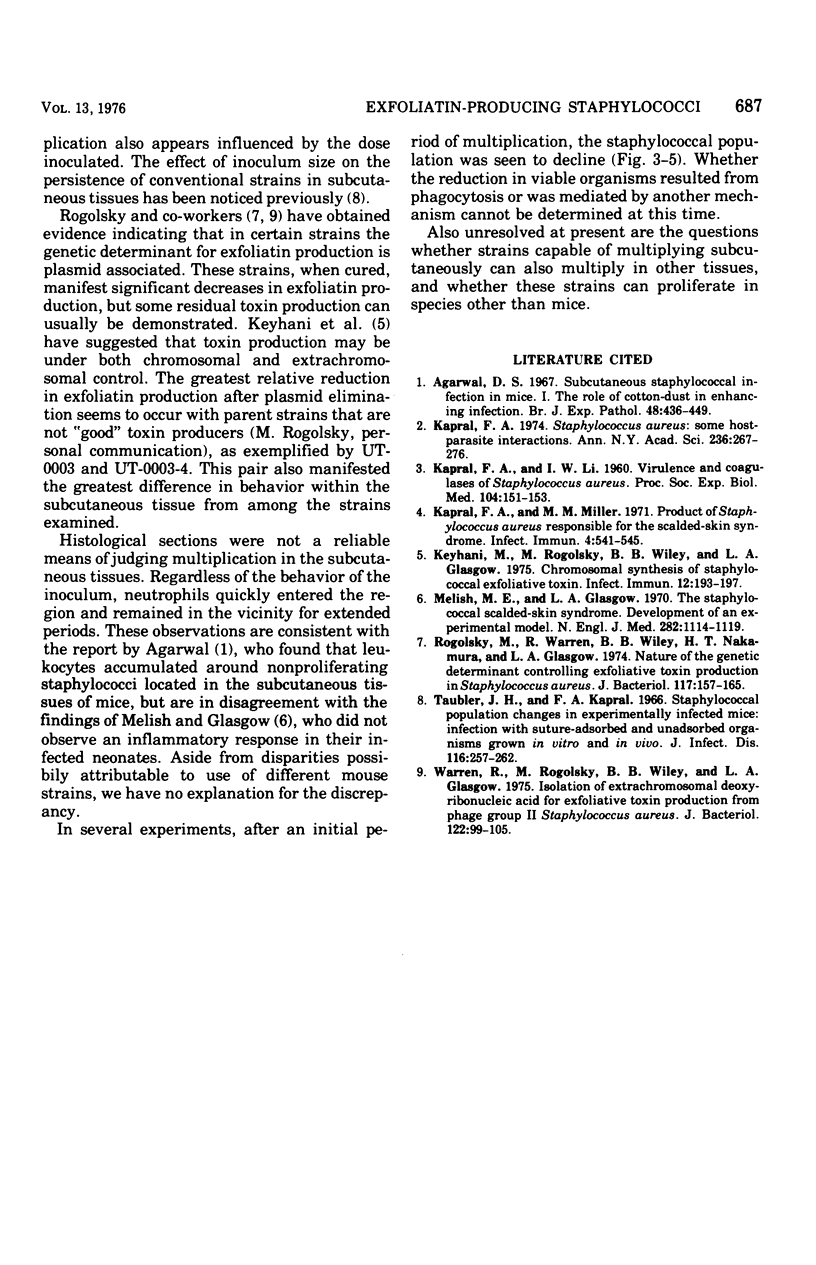
Selected References
These references are in PubMed. This may not be the complete list of references from this article.
- Agarwal D. S. Subcutaneous staphylococcal infection in mice. I. The role of cotton-dust in enhancing infection. Br J Exp Pathol. 1967 Aug;48(4):436–449. [PMC free article] [PubMed] [Google Scholar]
- KAPRAL F. A., LI I. W. Virulence and coagulases of Staphylococcus aureus. Proc Soc Exp Biol Med. 1960 May;104:151–153. doi: 10.3181/00379727-104-25761. [DOI] [PubMed] [Google Scholar]
- Kapral F. A., Miller M. M. Product of Staphylococcus aureus responsible for the scalded-skin syndrome. Infect Immun. 1971 Nov;4(5):541–545. doi: 10.1128/iai.4.5.541-545.1971. [DOI] [PMC free article] [PubMed] [Google Scholar]
- Kapral F. A. Staphylococcus aureus: some host-parasite interactions. Ann N Y Acad Sci. 1974 Jul 31;236(0):267–276. doi: 10.1111/j.1749-6632.1974.tb41497.x. [DOI] [PubMed] [Google Scholar]
- Keyhani M., Rogolsky M., Wiley B. B., Glasgow L. A. Chromosomal synthesis of staphylococcal exfoliative toxin. Infect Immun. 1975 Jul;12(1):193–197. doi: 10.1128/iai.12.1.193-197.1975. [DOI] [PMC free article] [PubMed] [Google Scholar]
- Melish M. E., Glasgow L. A. The staphylococcal scalded-skin syndrome. N Engl J Med. 1970 May 14;282(20):1114–1119. doi: 10.1056/NEJM197005142822002. [DOI] [PubMed] [Google Scholar]
- Rogolsky M., Warren R., Wiley B. B., Nakamura H. T., Glasgow L. A. Nature of the genetic determinant controlling exfoliative toxin production in Staphylococcus aureus. J Bacteriol. 1974 Jan;117(1):157–165. doi: 10.1128/jb.117.1.157-165.1974. [DOI] [PMC free article] [PubMed] [Google Scholar]
- Taubler J. H., Kapral F. A. Staphylococcal population changes in experimentally infected mice: infection with suture-adsorbed and unadsorbed organisms grown in vitro and in vivo. J Infect Dis. 1966 Jun;116(3):257–262. doi: 10.1093/infdis/116.3.257. [DOI] [PubMed] [Google Scholar]
- Warren R., Rogolsky M., Wiley B. B., Glasgow L. A. Isolation of extrachromosomal deoxyribonucleic acid for exfoliative toxin production from phage group II Staphylococcus aureus. J Bacteriol. 1975 Apr;122(1):99–105. doi: 10.1128/jb.122.1.99-105.1975. [DOI] [PMC free article] [PubMed] [Google Scholar]


